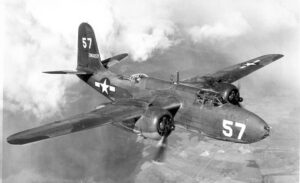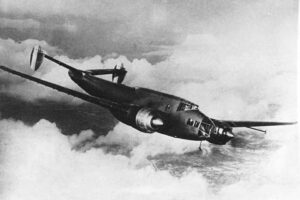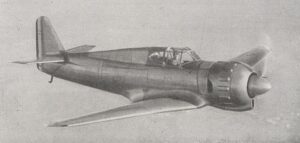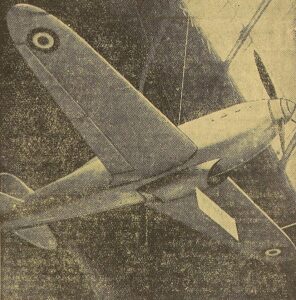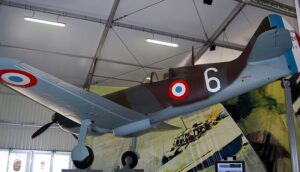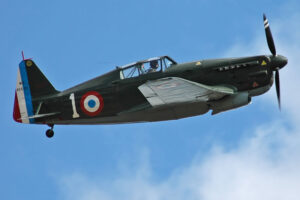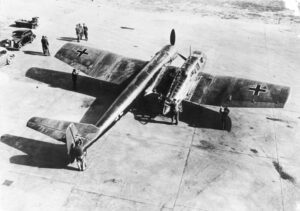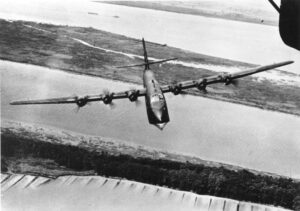Time Period: World War II
Country of Origin: United Kingdom
Type: Fighter Aircraft, Bomber Aircraft, Reconnaissance and Surveillance
Manufacturer: Bristol Aeroplane Company
Bristol Blenheim Aircraft Overview
The Bristol Blenheim was a British light bomber aircraft that was used by the Royal Air Force (RAF) during World War II. It was designed and built by the Bristol Aeroplane Company in the 1930s as a fast civilian airliner, but was quickly adapted for military use after the outbreak of war.
The Blenheim was a twin-engine monoplane with a streamlined design that allowed it to achieve high speeds for its time. It was armed with a combination of machine guns and bombs, and was used primarily for low-level bombing and reconnaissance missions.
One of the Blenheim’s most significant contributions to the war effort was its use in the early stages of the conflict, when it was used to attack German shipping and coastal targets. However, the aircraft proved to be vulnerable to enemy fire, and suffered heavy losses during the Battle of Britain.
Despite its limitations, the Blenheim remained in service throughout the war, and was used in a variety of roles, including as a night fighter, a trainer aircraft, and a transport plane. It also saw service with other Allied air forces, including those of Canada, Finland, and Yugoslavia.
Overall, the Bristol Blenheim was an important aircraft in the early stages of World War II, and played a significant role in the RAF’s campaign against Germany. Its speed and versatility made it a valuable asset in a variety of roles, and its service helped to pave the way for the development of more advanced bomber aircraft later in the war.
Bristol Blenheim Specifications
- Crew: 3
- Length: 42 ft 7 in (12.98 m)
- Wingspan: 56 ft 4 in (17.17 m)
- Height: 9 ft 10 in (3.00 m)
- Wing area: 469 sq ft (43.6 m2)
- Airfoil: RAF-28 (18%)
- Empty weight: 9,790 lb (4,441 kg)
- Gross weight: 14,400 lb (6,532 kg)
- Powerplant: 2 × Bristol Mercury XV 9-cylinder air-cooled radial piston engines, 920 hp (690 kW) each
- Propellers: 3-bladed Hamilton Standard variable-pitch propellers, built under a license agreement (1935) by de Havilland.
Bristol Blenheim Performance
- Maximum speed: 266 mph (428 km/h, 231 kn) at 11,800 ft (3,600 m)
- Cruise speed: 198 mph (319 km/h, 172 kn)
- Range: 1,460 mi (2,350 km, 1,270 nmi)
- Service ceiling: 27,260 ft (8,310 m)
- Time to altitude: 6,500 ft (2,000 m) in 4 minutes 10 seconds
- Wing loading: 30.7 lb/sq ft (150 kg/m2)
- Power/mass: 0.13 hp/lb (0.21 kW/kg)
Bristol Blenheim Armament
- Guns:
- 1 × .303 in (7.7 mm) Browning machine gun in port wing
- 1 or 2 × .303 in (7.7 mm) Browning guns rear-firing in under-nose blister or Nash & Thompson FN.54 turret
- 2 × .303 in (7.7 mm) Browning guns in dorsal turret
- Bombs:
- 1,200 lb (540 kg) total
- 4 × 250 lb (110 kg) General Purpose bombs or
- 2 × 500 lb (230 kg) GP bombs internally and 8 × 40 lb (18 kg) GP bombs externally
Avionics
- T1082 (transmitter) and R1083 (receiver) radio sets.
Bristol Blenheim Image Gallery
More Bristol Aeroplane Company Aircraft
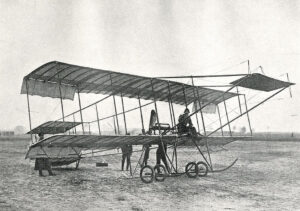
Bristol Boxkite
The Bristol Boxkite was a pusher biplane and one of the first aircraft types to be built in quantity; mostly for training.

Bristol Beaufighter
The Bristol Beaufighter is a British multi-role aircraft developed by the Bristol Aeroplane Company during the Second World War.
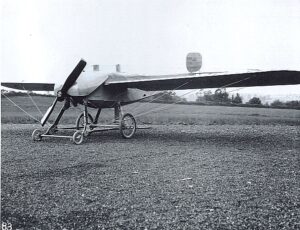
Bristol Coanda Monoplane
The Bristol Coanda Monoplane was a series of monoplane trainer aircraft designed for the British company British and Colonial Aeroplane Company.
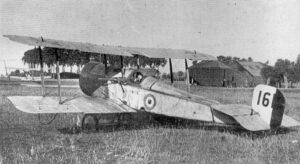
Bristol Scout
The Bristol Scout was a single-seat biplane originally designed as a racing aircraft and later used as a fast reconnaissance plane.
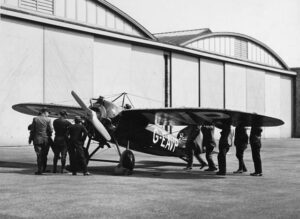
Bristol M.1
The Bristol M.1 was a British monoplane fighter used during the Great War (WW1). Despite its promise, only 130 Bristol M.1s were constructed.



